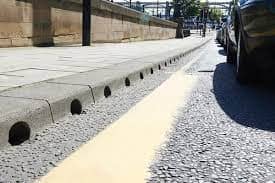The evolution of road drainage systems reflects the continuous adaptation of infrastructure to changing needs, technologies, and environmental considerations. From rudimentary designs in the past to the sophisticated systems of the present, road drainage has played a pivotal role in maintaining road integrity and ensuring safe transportation. This article takes a journey through the past, explores the current state of road drainage systems, and anticipates the future innovations that will shape the way we manage water on our roadways.
Historical Road Drainage Practices
Primitive Drainage Solutions
In the early days of road construction, the concept of systematic road drainage was rudimentary. Roads were often designed with simple slopes to allow rainwater to run off naturally. Basic ditches and culverts were employed to redirect water away from the road surface. While these practices provided some level of drainage, they were insufficient to address the challenges posed by heavy rainfall and increasing traffic volumes.
Emergence of Macadamized Roads
The advent of macadamized roads in the 19th century marked a significant advancement in road construction. These roads, composed of compacted layers of crushed stone, introduced improved drainage through the incorporation of cambered surfaces. The camber allowed water to flow to the sides, reducing the risk of water accumulation and subsequent damage to the roadbed. Despite these innovations, drainage systems remained relatively basic compared to contemporary standards.
The Present State of Road Drainage Systems
Integration of Engineering Principles
In the modern era, road drainage systems have become integral components of road design and construction. The principles of hydraulics and engineering are applied to create efficient and sustainable drainage solutions. Roads are carefully graded, incorporating crowns and cross slopes to facilitate the smooth flow of water. A variety of drainage structures, including gutters, stormwater drains, and culverts, are strategically placed to manage both surface and subsurface water.
Innovative Materials and Technologies
The materials used in road drainage systems have also evolved. Perforated pipes, geosynthetics, and advanced drainage aggregates contribute to more durable and resilient systems. These materials enhance the capacity of drainage systems to handle varying water volumes and reduce the risk of erosion. Additionally, the integration of smart technologies enables real-time monitoring and adaptive responses to changing weather conditions, ensuring optimal drainage efficiency.
Challenges in the Present
Urbanization and Impervious Surfaces
The rapid urbanization of areas has led to an increase in impervious surfaces, such as roads and buildings. This shift disrupts natural water absorption and heightens the importance of effective road drainage systems. Sustainable urban planning practices that incorporate permeable surfaces and green infrastructure are essential to mitigate the challenges posed by increased runoff.
Climate Change and Extreme Weather Events
The intensification of extreme weather events due to climate change presents new challenges for road drainage systems. Heavy rainfall, storms, and flash floods can overwhelm traditional drainage infrastructure. Adaptable and resilient systems that can cope with the unpredictability of weather patterns are crucial for maintaining road functionality in the face of climate-related challenges.
Future Innovations in Road Drainage Systems
Green Infrastructure and Sustainable Design
The future of road drainage systems lies in sustainable and eco-friendly solutions. Green infrastructure, including permeable pavements, vegetated swales, and green roofs, is gaining prominence. These features not only manage stormwater but also contribute to environmental sustainability by promoting biodiversity, reducing heat island effects, and enhancing overall urban aesthetics.
Integration of Smart Technologies
The continued integration of smart technologies holds immense potential for the future of road drainage systems. Advanced sensors, data analytics, and machine learning algorithms can enable predictive maintenance, real-time adjustments to drainage configurations, and improved overall system efficiency. Smart drainage systems have the capability to optimize water flow, enhance safety, and reduce maintenance costs.
Conclusion:
The evolution of road drainage systems from primitive designs to sophisticated, technology-driven solutions mirrors the broader advancements in infrastructure development. As we navigate the challenges of urbanization, climate change, and increased transportation demands, road drainage systems remain at the forefront of resilient and sustainable road design. The past has seen incremental improvements, the present showcases sophisticated engineering, and the future promises innovative, environmentally conscious solutions.
Road Drainage Systems, often underappreciated, are the unsung heroes that ensure our roads withstand the test of time and environmental challenges. The term “Road Drainage Systems” encompasses not just pipes and culverts but a dynamic and evolving field that continually adapts to the needs of a changing world.
By recognizing the historical context, embracing contemporary technologies, and anticipating future innovations, we pave the way for road infrastructure that is not only functional and safe but also harmonious with the natural environment. The evolution of road drainage systems is a testament to our commitment to building a sustainable and resilient future for transportation networks.





